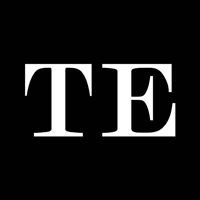Talent is the world’s most valuable resource. It’s time for leaders to elevate its strategic importance.
By Lauren Dixon, Bravetta Hassell, Sarah Fister Gale and Frank Kalman
When Lynanne Kunkel first started as vice president of human resources for Whirlpool Corp. in 2010, the appliance manufacturer was in the middle of what can best be described as an economic tsunami.
Like many corporations, the Benton Harbor, Michigan-based firm was still recovering from the worst recession since the 1930s. But Whirlpool was wading in especially choppy waters. “We were in the middle of a fairly major business turnaround at that time that I like to refer to as the perfect storm,” Kunkel said.
First was the macroeconomic environment. With new home building at a standstill following the U.S. housing crash and ensuing global financial crisis, consumer demand for appliances was anemic. Compounding that pain was a shifting competitive landscape. The emergence of new global challengers in the appliance industry, Samsung and LG, coupled with the general economic malaise, weighed on Whirlpool’s performance.
Whirlpool’s stock price sank to as low as $22 in February 2009, and while it recovered to about $75 in January 2010, the firm, which would celebrate its 100th anniversary the following year, was in need of a spark.
“At that time, from a business standpoint, we were really looking at things like we have to move faster,” Kunkel said.
Speed has become a hallmark of today’s economy. But between 2007 and 2010, companies weren’t worried about speed — they were worried about survival. Whirlpool, however, sensed something different on the horizon, and in its own effort to survive stumbled upon a realization that many companies have made only recently.
While the recession decimated the global workforce, triggering mass layoffs that led to a nearly 11 percent U.S. unemployment rate, its wake revealed a different economy. The knowledge worker had long been at the heart of the economy, but as a tepid recovery moved along, a new talent economy emerged.
Today’s pursuit for talent is as competitive as ever, led by a growing skills shortage, advancing technologies, generational shifts and evolving dynamics around the nature of work. Thanks to years of low interest rates, CEOs are not devoid of cash to invest in new products and services; they’re devoid of the people to lead these initiatives.
This reality demands that executives take charge of how they attract, develop and retain their organization’s talent. Above all, it demands that they focus on the people, organization and innovation required to succeed in the new era.
Whirlpool, like many others since, quickly realized in 2010 that its ability to move faster and stay ahead of its competitors involved shifting its internal talent economy. That’s why a major part of the company’s turnaround plan involved adopting new talent-related strategies as well as redesigning its corporate headquarters and global offices based on collaboration and transparency. Its stock now trades at about $190 a share.
While Whirlpool’s story is emblematic of how to succeed in the talent economy, it is not alone. Savvy executives understand that talent leads in this new economy, and it is Talent Economy’s mission to be their guide and help them show others the way forward.

PEOPLE
Understanding how to manage and motivate people requires business leaders to adopt a number of progressive strategies.
The heart of the talent economy is the people who represent it. Of the world’s roughly 7 billion people, about 3 billion are considered employed and 205 million are unemployed, according to the most recent estimates from the International Labour Organization, a research agency affiliated with the United Nations. In the United States, the world’s largest economy by gross domestic product, about 125 million of the country’s roughly 319 million people are considered full-time employees, according to 2016 data from the U.S. Bureau of Labor Statistics.
Still, an abundance of people doesn’t necessarily translate to a proliferation of skills. In the U.S., labor force participation — the number of people employed or actively looking for work — is hovering around a 38-year low, despite a national unemployment rate of around 5 percent. Economists consider this “full employment,” yet the disconnect between the two figures speaks to the number of people whose skills are no longer useful, as well as changes spurred by technology and globalization.
What’s more, according to a 2015 study by ManpowerGroup, an international research and advisory firm, 38 percent of global companies say they are having difficulty filling their open positions, the highest such figure since 2007. Unsurprisingly, the study points out the difficult-to-fill positions as executive, administrative, skilled trade, technicians and information technology.
The stakes of this skills mismatch are high. The ManpowerGroup study notes that 43 percent of executives say their inability to fill jobs with these skills has reduced their ability to serve clients, while 41 percent say it has reduced their competitiveness and productivity — two factors with inherent bottom-line implications.
In today’s global business environment, talent is as scarce as it has ever been. While workers in the industrial era were largely interchangeable, today’s most valuable jobs, and even some further down the chain of command, require a specific set of skills not easily found in the market.
This shortage of skilled talent has created a spirited corporate recruiting environment, where an arms race of lavish perks and wage one-upmanship has defined new norms around workplace culture and the employer-employee social contract. “I truly believe there is an absolute war for good talent,” said Adam Ochstein, founder and CEO of StratEx Partners, a Chicago-based human resources software company.
Competitive advantage remains elusive. Outside of perks and lofty wages, another strategy is “transparency, transparency and transparency,” Ochstein said. For some business executives, promoting total transparency at work, including around employee compensation, can be painful. But the core strategy is around communication and decision-making. On a weekly basis, for example, Ochstein encourages his employees to question him and other leaders on their decisions. “They don’t always walk away liking my response, but they know there’s a forum where they can come in and communicate.”
A large part of this mindset shift is generational. “Generation X, Y and soon to be Z come from a perspective of inclusion and need to understand not only what their job is and their task, but how that job and task impacts their division or department [and] the overall organization,” Ochstein said.
So far, satisfying Generation Y, or millennials — generally those born between 1980 and 2000 — has been fleeting. Now the largest generation in the workforce, millennials are the least likely to stay for more than a few years. According to a 2016 study by professional services firm Deloitte, 44 percent of millennials say they want to leave their current firm within the next two years, mostly because they feel overlooked and see little path forward. The 30-year career tenure, common a generation ago, is quickly becoming a relic.
Rather than avoid developing millennials because of the assumption they’ll leave, executives should train and invest in them, said Joan Kuhl, founder of Why Millennials Matter, a New York -based research and consulting agency. Tapping millennials’ entrepreneurial spirit, passionate push for change and ability to think beyond traditional corporate norms should be atop executives’ talent strategies. “People should always be the priority,” Kuhl said. “People create ideas. People create culture.”
Successfully attracting, retaining and developing the next-generation workforce will require executives to rethink their own development. The leadership skills that many executives acquired during their career likely won’t suffice to manage the needs of the future workforce. First and foremost should be an emphasis on collaboration. Open office environments, adopted by some firms, are a start, but to remain competitive in the war for talent, executives need to intentionally open the lines of communication and make their cultures more collaborative. Emotional intelligence, or EQ, is another skill executives should develop. As workforces grow more collaborative, formerly command-and-control executives will need to soften up, learn to listen and engage in a more coach-based leadership style.
These skills will help executives manage a workforce that is increasingly dynamic. Full-time employees aren’t the only source of talent. The rise of the gig economy and continued value of freelancers has given executives new chess pieces to move when plotting their companies’ futures. Roughly 53 million Americans are independent workers, according to Freelancers Union, a nonprofit advocacy organization. That number is expected to rise. The challenge for business executives will be maintaining a dual view that assesses which skills now and in the future are best met by freelancers and which will benefit more from retaining employees full time.
Executives also need to manage the freelancer-employee dynamic so that there remains a cohesive organizational culture around productivity and innovation. Not being able to integrate these worker groups toward a shared mission will put firms at a disadvantage, according to Jeffrey Wald, co-founder and president of Work Market Inc., a New York City-based software company that helps organizations engage on-demand workers.
This means both should be included in formal employee development, another corporate component constantly being reinvented. Companies like General Motors Co. are encouraging informal development conversations between leaders and employees so that employees take more ownership in their development. Employees at the company are told that leaders are there to “champion” their learning, but it is on the employee to make the most of the resources provided to them. “I think everyone wants to be developed, and I think all companies want to develop their employees,” said Mimi Brent, head of global career development at GM.
Recruiting, too, is poised for further disruption. Outside of traditional hiring, companies need to consider more creative, unconventional approaches to ushering talent into the organization. Some strategies may simply be new takes on old models. For instance, rather than hiring people for indefinite terms out of college or university, some companies have embraced the apprenticeship model, a practice that dates back to the Middle Ages.
Aon PLC is one such firm. It uses two-year apprenticeships to fill roles in account management, client support, financial analysis and technology. After five successful years in the U.K., Aon is now rolling out a similar program in the United States, according to Margaret Heneghan, global head of leadership and talent development at the firm. “This is a legitimate talent strategy that we think that we need to pursue in order to secure the right talent for the right roles,” Heneghan said.
Indeed, to win in today’s talent-driven economy, executives need to take the reins of their talent strategies and avoid delegating them to overly tactical human resources managers. Embracing unconventional strategies like apprenticeships; learning to manage and integrate the growing freelance workforce; adopting new leadership skills; and recognizing the need to create environments for employees to develop are all significant factors that will shape leaders’ thinking.
As the cliché goes, people are an organization’s most valuable asset — but they’re also its biggest cost. The risk associated with mismanaging talent is perhaps the greatest a company faces. While to some the costs of properly investing in talent may seem unduly high, the benefits executives will receive for managing it properly are unlimited and often overlooked.

ORGANIZATION
How people are organized, as well as shifting norms around how office environments are assembled and used, will have profound influence on the future flow of talent.
If people are the core of the talent economy, how executives organize and manage them to contribute is the next significant lever propelling companies forward.
Start with the corporate office. Designed as ultra-efficient cubicle farms based on secrecy and individual productivity in the 1960s, today’s office environment has taken on a form inscrutable to the corporate titans of yesteryear. Cubicles are being broken down; there’s an integration of new technologies; and, perhaps most important, customs around the role physical space plays in work are being rethought.
Much of this is driven again by the influence of millennials, a younger, more agile demographic that entered the corporate world with drastically different notions about how work is done and how groups of people should be organized. Many firms now feature entirely open office plans, where the CEO is just as likely to sit among interns as the rest of the C-suite. These environments help enliven a sense of shared community and collaboration; they also break down formerly bureaucratic structures that slowed decision-making.
In 2012, global engineering technology firm Siemens AG began rolling out its “New Way of Working” campaign in offices across Europe and North America. The new office design replaced cubicle farms with open spaces featuring glass-walled meeting rooms, more comfortable common areas, “phone booths” for private calls, and shared offices that anyone can use. “It is a philosophy that says breaking down walls and creating shared spaces will enable collaboration and transparency,” said Bob Kermanshahi, head of strategy for Siemens Real Estate Americas. “That philosophy is then reflected in the way we design our offices.” Employees at the firm appear to agree. The company’s most recent engagement surveys show 95 percent are happier in the new space.
“Executives need to recognize that they are not the demographic that represents their workforce,” said Dominique Jones, chief people officer for Halogen Software in Ontario, Canada. “It means letting go of how we think about managers and career development, and finding the courage to listen to what the organization wants.”
This evolving mindset around work, along with the rise of communication and collaboration technology, has upended more than just how physical office space is used. Some firms, like internet retailer Zappos.com, are taking the open office design a step further by eliminating traditional hierarchical reporting structures, leading to flatter organizations, a freer flow of ideas and, according to firms that have adopted the practice, better products and services.
Such a mentality includes measuring productivity by output, not time at a desk, and trusting people to do their jobs, not micromanaging their every move, said Karolyn Hart, chief operating officer of InspireHUB Inc., a custom app development and consulting firm for nonprofits in Windsor, Ontario. In short, executives should direct their managers to trust their talent.
Hart came to this realization when she was head of marketing for WindsorEssex Economic Development Corp. prior to joining InspireHUB. There, her team was tasked with selling the region as an economic hub. When she took the job in 2012, Hart found employees were expected to be at their desks from 9 a.m. to 5 p.m. Hart argued they would be more creative if they went into the community to find inspiration for their campaigns. “If you are designing a product, you spend time with that product,” she said. “This was no different.” Eventually her team started working where they wanted, and, according to Hart, loyalty and productivity increased. “If you treat people like adults they will work their tail off for you.”
The expectation around how and when a central office is used has evolved as well. About half of the U.S. workforce has a job that is compatible with working from home, according to data compiled by Global Workplace Analytics, with about 25 percent of workers telecommuting frequently. That compares to the roughly 90 percent of the workforce that says they would like to work remotely at least part time.
Employees’ desire to work remotely should push executives to establish more flexible policies around the practice. If they don’t, they might soon find themselves operating in an obsolete environment — with no plan to adapt. According to a 2016 “Future Workforce Study” by technology firms Dell Inc. and Intel Corp., half of all global employees said better communication technology and remote teams will make face-to-face conversation obsolete in the near future, while 52 percent of employees said they already work outside of a traditional office at least one day a week. “You can create a culture of communication and accountability without being in the same room,” InspireHUB’s Hart said. “You just have to be intentional about it.”
Such environments aren’t reserved for tech companies or venture-backed startups flush with cash. Whirlpool, founded in 1911, in 2006 adopted its own work-from-anywhere policy, partly under the realization that sitting at a desk during traditional working hours doesn’t equal productivity, and partly due to its acquisition of Maytag Corp. (the company simply couldn’t fit everyone in its headquarters at the time). Thanks to such flexibility, use of technology-based collaboration tools and a redesigned corporate headquarters, Whirlpool has been able to reduce its scheduled meetings by 30 percent, according to Mike Heim, the company’s chief information officer.
Other significant organizational strategies in today’s economy require that executives consider eliminating long-held human resources practices around paid time off and work-life balance. Just as the evolving nature of the physical office has changed how talent performs, executives need to rethink their expectations around workers’ ability to get away from work.
Consider the amount of time employees are allotted for vacations. While many firms still operate on a formal accrual system or paid time off allocation, some progressive companies — like Netflix Inc. and Virgin Group — now offer unlimited vacation time for their employees. So long as they don’t leave their teams hanging and communicate with their managers, employees there can take time off whenever they want as often as they need. Moreover, because U.S. workers are historically bad at taking time off, roughly 3 percent of firms even provide employees with a “vacation stipend,” according to 2016 survey data from the Society for Human Resource Management.
This will again require a change in executives’ mindsets and some initial discomfort. But for firms keen on remaining competitive in the talent economy, their leaders need to acknowledge the value of time away from work and its positive influence on performance, said Maura Thomas, founder of Regain Your Time, a consultancy based in Austin, Texas.
A reimagined vacation policy alone won’t suffice. Executives, many of whom are challenged with burnout themselves, need to build their cultures around work-life balance, from revised policies around maternity and paternity leave; to building team and reporting structures compatible with anywhere, anytime work; to flexibility with regard to when employees respond to company-related communication.
Above all, business leaders need to be hands-on in their organization’s approach to structuring and managing these policies, and they need to lead by example.
Whether talent is working at home or in the office, whether it is a veteran manager or a summer intern, these new workplace realities reflect a larger shift toward managing with trust and respect, as well as with a more modern sense of what constitutes employee productivity and success.
“The companies that are doing it right are thoughtful about implementing policies that support employees’ need to be productive,” Thomas said.

INNOVATION
Firms that capture the power of their talent through innovation will be the ones leading the way now and in the future.
Not every company will succeed in the talent economy. Even if leaders are successful in finding the right skills and attracting the right people, even if they adapt their organizational structures and cultures to create the most efficient workforces, many are poised to fall flat because they haven’t captured what every company ultimately covets: innovation.
In today’s economy, innovation can best be described as the creation of new methods, products or ideas, and it has significant implications in the world of managing talent. Identifying, attracting and organizing talent is necessary, but it is just the start. Companies and leaders that are at the forefront of the talent economy are fully embracing innovative practices around people analytics and workforce planning, as well as data science and machine learning.
Operating in these spaces will again require that executives challenge old conventions, both around business and the role talent plays in it.
“The most interesting part is not to invent the lightbulb, but how to make that lightbulb shine better with less energy and for a longer period of time,” said Dan Croitor, a people analytics and human resources software strategist at Solutions PC in Brussels, Belgium.
Workforce planning and people analytics are basic tools required in the talent economy. Many firms have made strides in improving how they use their employee data to make management decisions, from measuring core talent metrics such as headcount to employee sentiment, retention and turnover. But most of these measures reflect things that have already happened.
With the explosion of data and computing power has come an enhanced ability to predict workforce needs and costs, in addition to being able to identify skills and talent shortages for building organizational talent models for leadership succession. These developments require that executives continue to build a strategic partnership with their human resources function to ensure that insights from such tools are included in the broader business strategy.
“HR can be and should be at the table leading and thinking about what’s needed — thinking about things like culture and engagement, and performance management,” said Jason Geller, national managing principal for human capital consulting at Deloitte. “You can either be stuck with outdated approaches to that or more modern approaches that have adapted to how organizations work.”
Yet, even as people analytics transform how executives conceptualize and plan around talent, it’s important for companies to remain focused on asking the right questions of the data and not falling victim to the trappings of big data. “Without the right question, your probability of success is quite smaller,” Croitor said. And oftentimes asking the right questions of data comes down to finding the right talent to ask the question. While many firms have successfully employed data analysts in other core operational functions, executives should make sure those leading the people analytics push are equipped with similar capabilities, or have those in other departments work cross-functionally.
Workforce planning and people analytics isn’t the only area in which innovation should influence executives’ talent strategies. New technologies are transforming once-routine tasks such as candidate interviews and job postings. Video interviews, in particular, have the potential to transform how talent flows in the market. Goldman Sachs Group Inc. is one firm that has made public plans to shift its on-campus interviews to video, with the hope of expanding its once-exclusive candidate pool of Ivy League students to include talent from other parts of the country. Others have followed.
Social media is also continuing to refine how companies manage their reputations, both from a recruiting standpoint and in terms of promoting their larger value propositions. “[Job seekers] want to work at a place that actually values them as a person, wants them to be engaged,” said Laura Hamill, chief people officer for Limeade, a corporate wellness technology company based in Bellevue, Washington.
This technology is also changing how employees communicate and work internally. Through social networking applications like Slack and Yammer, employees can connect with one another and rapidly share information useful to their work. Furthermore, pulse apps enable employees to communicate with managers in real time about challenges rather than wait until annual performance evaluation time. In 2012, Whirlpool ditched traditional office tools in favor of a complete Google Apps suite, and productivity immediately increased, Heim said. Finally, products like Limeade and others are deployed to wrap around other facets of a person’s life, like their health and wellness.
Just as technology and innovation has created a new normal in how work gets done, further advancements are likely to cause even more uncertainty for executives.
The biggest innovation likely to both disrupt and contribute to the talent economy in the next decade is the rise of artificial intelligence, or AI. “The machines, the robots, are going to replace a lot more roles much faster than I think many people are aware,” said Ross Sparkman, head of strategic workforce planning at Facebook Inc.
With AI’s rise will come many workforce costs. The most severe predictions estimate that robots could replace as many as half of the world’s jobs in the next 30 years. While some roles will certainly be eliminated — especially those with repetitive, computational tasks — others are poised to benefit, Sparkman said. Continued advancement in AI technology will potentially free up workers’ time so they can function more strategically, for instance. Still, many of the aftereffects of AI remain a mystery and won’t be fully understood for some time.
In either case, AI and other technologies’ advancement will require that both companies and individuals deeply consider how their skills and capabilities will be affected. “Companies that don’t have a plan in place for this are going to find themselves at a disadvantage,” Sparkman said.
Given all that has changed and is likely to change further, the outlook for the talent economy is bright. Even though the challenges around maintaining a sustainable business in the face of continued uncertainty are indeed real, the world’s people — its talent — remain unwavering in their ability to overcome whatever obstacles stand in their way. In an era of widely available capital — and even in times without — talent is among the only true competitive differentiators executives have at their disposal.
Talent, in fact, is the world’s most valuable resource, one no enterprise can move forward without. And for organizations to continue creating new value for their customers, business leaders need to fully embrace this credo and take charge of it as the key to building a better future.
This story originally appeared on the cover of the Fall 2016 issue of Talent Economy‘s quarterly journal. Click here to view the digital edition.
If you want more from Talent Economy, sign up here for newsletters, exclusives and more!















